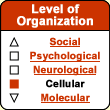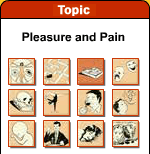Some addictions do not
involve drugs. Instead, the brain becomes dependent on substances
that it secretes naturally during certain activities.
For instance, you can become “hooked” on endorphins–the
endogenous opiates that the brain produces when you are working
or engaging in sports. The stress of these activities causes
the norepinephrine-producing neurons in the brain to become
overactive. To counteract the excess norepinephrine, the brain
produces more endorphins, which eliminate the sense of discomfort
caused by the norepinephrine and can even create a feeling
of euphoria. But once you stop the activity that raised your
endorphin levels, there are no longer enough endorphins in
your system to control the secretion of norepinephrine. As
a result, you will experience feelings both of deprivation
(from lack of endorphins) and discomfort (from the excess norepinephrine).
You will therefore again seek out those activities that flood
your brain with its own endogenous morphines. |




